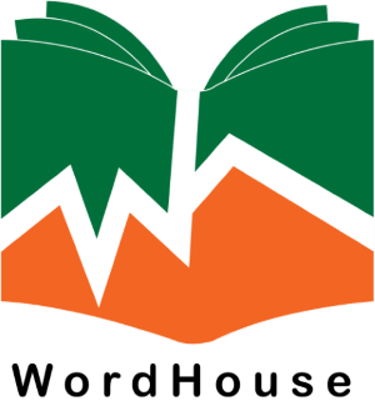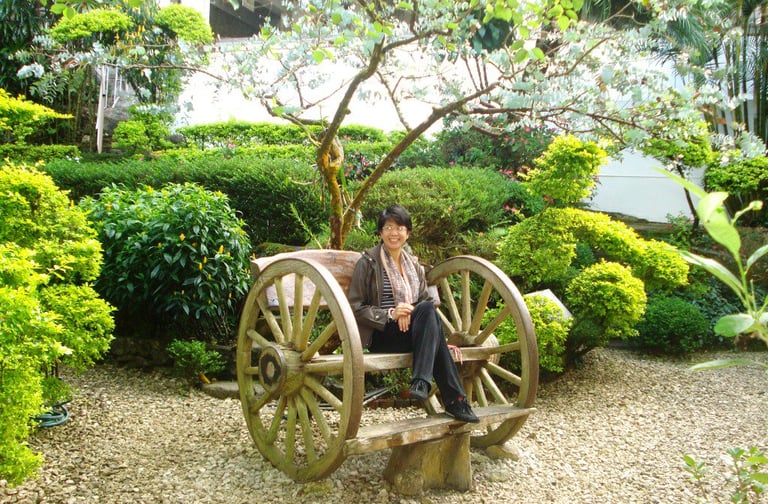Close Reading Language in Personal Essays and Memoirs
READING AT WORDHOUSERESOUND


When I Read Closely, I Hear a Life Unfold
There was this time, many times, actually, when I found myself awed by a column from Mr. Butch Dalisay in the Philippine Star. The writing was so graceful, so quietly assured, that I once e-mailed a comment and asked, “How are you writing this so beautifully?”
He replied, simply: “Just be true to what you’re experiencing.”
That line stayed with me.
Being true, this is what I’m probing whenever I do a close reading, diving into how an author’s language leaves an impact on me, the first (and hopefully not disinterested) reader. Many times, and this is not just me, I won’t even skim a document if I’m not drawn to the subject. Yet master writers have a way of pulling us in, not through drama or gimmick, but through the careful crafting of language. Every word, rhythm, and sentence shape reveals how an author builds voice, mood, and meaning.
Listening Closely
I first learned about close reading in my literature classes, because when we talk about creative writing and reading, there has to be some grounding in how we appreciate a text critically. In school, close reading came wrapped in academic jargon and thick with theory: Romanticism, New Criticism, Modernism, Postmodernism. Those frameworks offered useful ways to study style and structure, but they also felt like boundaries, helpful at first, then a little too tight. At times, the rules were reductive.
Later on, close reading became more personal, my own way of listening closely to writing that moves me. When I close read, I don’t just follow the narrative; I trace how the writer shapes the language itself, how word choice, rhythm, and structure leave their fingerprint on the page. I pay attention to every detail: diction, syntax, even how an argument unfolds (or deliberately refuses to). I’m fascinated by this process. Sometimes I get a little nerdy about it, turning phrases and sentences over and over in my head, delighted each time I uncover a bit of masterful craft.
Reading for Realness
One thing I always probe in creative writing is authenticity. Of course, I won't have all the time and resources to do a thorough research, so how exactly do I probe for realness? How do I declare that the truth unveiling before me on the page is at least 90 percent true? What truths are at stake in the first place?
Again, it’s only language, and how the author expertly manages it, that becomes my compass. Vivid sensory details, recurring symbols, and stylistic devices are more than decoration; they’re traces of what matters most to the writer. Take David Sedaris, for instance. I once read an essay of his after learning that parts of his so-called “true” stories had been questioned for their accuracy. Yet as I read, I found myself caring less about factual precision and more about how his sentences worked, how irony, tone, and timing conspired to tell a deeper emotional truth. Sedaris’s humor disarms, but beneath it lies something earnest, even painfully human.
As a reader, I realized I could forgive the blurred lines because the craft was that good. Perhaps that’s his secret: even the alleged inauthentic details feel like part of his authentic inauthenticity.
Context as Compass
When close reading, I don’t stop at the text itself, I also think about context. What’s happening around the author? Their cultural background, time period, and personal history all shape how they use language.
Nick Joaquin wrote with a lyrical devotion to Old Manila, his sentences thick with Spanish cadences and Catholic imagery. I can almost hear church bells and horse-drawn carriages in his syntax. Jessica Zafra, meanwhile, writes from the edge of Generation X, her essays crackle with sarcasm, pop culture, and dominatrix-level confidence. Her sharp humor becomes its own language, one that commands. Then there’s Pete Lacaba, the poet who never looked down on the popular. He wrote about movie stars and TV icons with the same seriousness he gave to politics and protest. His rhythm and references reveal how the vernacular itself can be a form of resistance. When I read writers in their time and context, I begin to see language as a living map of culture and history.
Staying Close
I keep close reading because it keeps me close to the text, to the writer, to the act of writing itself. It slows me down enough to hear how language breathes. Sometimes it feels like eavesdropping on how thought turns into feeling, how memory finds its rhythm on the page.
It’s not a method I can teach neatly, nor one I expect everyone to share. But for me, close reading has become both a habit and an affection. I meet every writer halfway through their syntax, tone, and the small, deliberate choices that reveal who they are. Each time I close read, I’m reminded that good writing isn’t just read; it’s experienced. When a sentence lingers, a quiet conversation is taking place between me and the author, and it continues long after I’ve turned the page.
If you’ve ever been moved by a line, or paused mid-paragraph just to reread a sentence that felt true, maybe you’re already doing your own kind of close reading too.
Tell me, which writers make you stop, listen, and look closer?
My Way of Doing a Close Reading
When I Obsess Over Diction
I start with the words themselves. Are they simple and direct, or lush and poetic? In creative nonfiction, an author’s diction often mirrors their emotional state. Short, clipped phrases might hint at tension or distance, while longer, winding sentences feel introspective and full of memory. I pay attention to recurring words or phrases, these linguistic clues often reveal what the author values, resists, or fears. And always, their vocabulary, whether plain and precise, or ornate and heady, is a giveaway of their sensibility and scholarship.
The Syntax Spiral
I get overly curious about how sentences are arranged. Authors can be wonderfully manipulative with syntax, deliberately misleading, only to land a perfectly timed conclusion. Their thinking aloud on the page is my fixation; I’m wary I might miss a turn of thought or a quiet crossing of a line that’s meant to slip by. Every pause and punctuation mark (or the lack of them), every brace, margin, and clipped expression, I trace these syntax spirals with delight. Still, I make sure that once I’ve wandered deep into the maze, I can find my way out and see exactly where the author was leading all along.
Tuning for Tone
In creative writing classes, there’s always that urgency to distinguish tone from mood or atmosphere, to name those delicate shifts in a writer’s voice. Is it nostalgic, melancholic, hopeful, pedantic, humorous, satirical? When I close read, I listen for these tonal murmurs. I can feel the author’s emotions in their language play, in how they compose the world through Things. The tone lives in their object choices, in the exact wording of every minute and intricate and grand and picturesque and loud and soft engagement with Things. It’s how emotion gets embedded not in what is said, but in how it sounds on the page, the grammar of feeling.
The Architecture of Language
For me, creative nonfiction is like the kind of buildings I love, architecture that’s functional yet artful. When I read closely, I’m walking through this constructed space, tracing metaphors, imagery, and symbols that form the rooms of thought, staircases of memory, and hallways of surprise.
Writers mark the places they keep returning to. Their ornament is language itself, the fixture that holds their emotion. In the architecture of their carefully built corners, I take pains to notice how words and expressions light up a room, fill the space with intention, and open up a relationship with everything extending beyond it.
Facts may outline the blueprint, but figurative language turns that plan into a space I want to enter, walk through, sit in, and reckon with.




